Recentemente, uno dei nostri utenti ci ha chiesto come resettare la password di amministrazione di WordPress su localhost? Se si utilizza WordPress su localhost e si dimentica la password, non è possibile resettarla via e-mail. In questo articolo, vi mostreremo come reimpostare la password di amministrazione di WordPress su localhost.
Perché la reimpostazione della password non funziona su localhost?
Il termine localhost viene utilizzato per descrivere un server locale non disponibile al pubblico. Ad esempio, il vostro computer personale.
Molti utenti di WordPress installano WordPress su localhost (nel proprio computer) per testare le modifiche, progettare siti web, provare nuovi plugin e persino imparare WordPress.
Se non avete ancora provato, consultate il nostro tutorial su come installare WordPress sul vostro computer Windows utilizzando WAMP.
Gli utenti Mac possono seguire le istruzioni del nostro tutorial su come installare WordPress in locale su Mac utilizzando MAMP.
Ecco il problema che alcuni principianti potrebbero incontrare.
Se dimenticate la password di amministrazione di WordPress mentre lavorate su localhost, NON sarete in grado di reimpostarla utilizzando la normale opzione di reimpostazione della password di WordPress.
L’opzione di reimpostazione della password invia per e-mail un link per reimpostare la password di WordPress. Per inviare le e-mail, il vostro server deve abilitare la funzione di posta.
Questa funzione è disattivata per impostazione predefinita sui server locali, il che significa che WordPress non sarà in grado di inviare l’e-mail di reimpostazione della password.
Ma non preoccupatevi, c’è un modo per reimpostare la password di WordPress su localhost.
Siete pronti? Iniziamo.
Video tutorial
Se il video non vi piace o avete bisogno di ulteriori istruzioni, continuate a leggere.
Reimpostare la password di amministrazione di WordPress su localhost
Utilizzeremo phpMyAdmin per reimpostare la password su localhost. Basta visitare il pannello di controllo phpMyAdmin digitando questo URL nella barra degli indirizzi del browser:
http://localhost/phpmyadmin/
Vi verrà chiesto di fornire il nome utente e la password di MySQL. In genere, il nome utente è root senza password.
Una volta effettuato l’accesso, è necessario selezionare il database di WordPress.
Una volta selezionato il database, verrà visualizzato un elenco di tabelle del database di WordPress. Fate clic sul link Sfoglia accanto alla tabella degli utenti di WordPress.
Ora verrà visualizzato l’elenco delle voci della tabella utenti. Il numero di righe dipende dal numero di utenti registrati sul vostro sito WordPress.
Successivamente, è necessario fare clic sul link Modifica accanto al nome utente dell’utente amministratore.
Si aprirà un modulo in cui è possibile modificare le informazioni memorizzate nel database di WordPress per quell’utente.
Scorrete fino al campo user_pass e digitate una nuova password nella colonna “value”. Successivamente è necessario selezionare MD5 nella colonna “function”.
Non dimenticate di fare clic sul pulsante Vai in basso per salvare le modifiche.
È tutto, ora potete accedere al vostro sito WordPress su localhost utilizzando la nuova password.
Se per qualche motivo avete difficoltà a seguire il metodo phpMyAdmin, consultate la nostra guida su come creare un utente amministratore di WordPress utilizzando il file functions.php. Aprite semplicemente il file functions.php del vostro tema e incollate il codice riportato nell’articolo qui sopra e sarete a posto.
Speriamo che questo articolo vi abbia aiutato a capire come resettare la password di amministrazione di WordPress su localhost. Potreste anche voler consultare la nostra guida su come spostare WordPress dal server locale al sito live.
Se questo articolo vi è piaciuto, iscrivetevi al nostro canale YouTube per i video tutorial su WordPress. Potete trovarci anche su Twitter e Facebook.

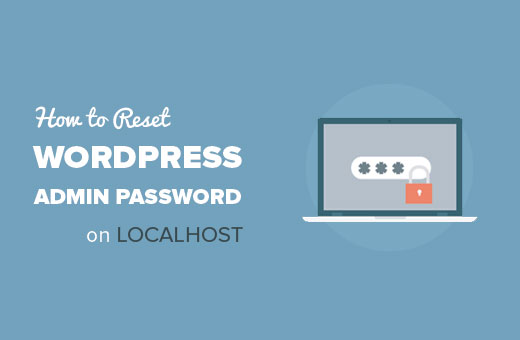
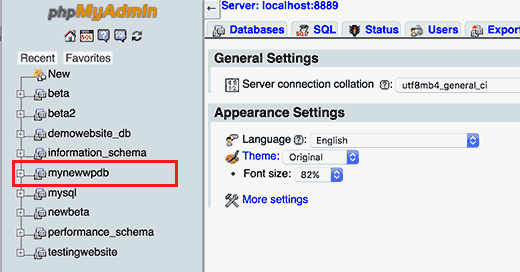
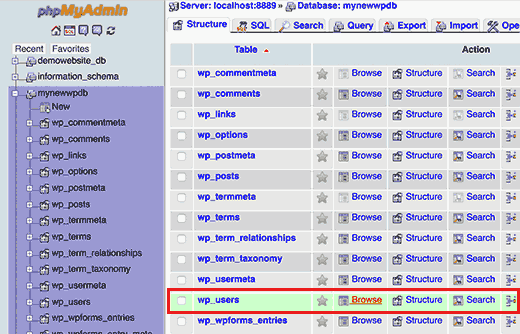
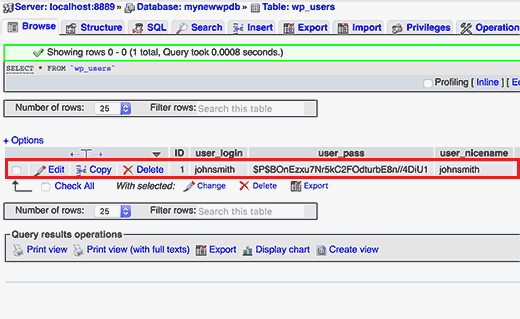
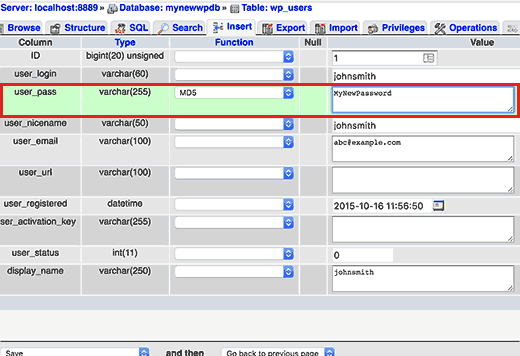




Syed Balkhi says
Hey WPBeginner readers,
Did you know you can win exciting prizes by commenting on WPBeginner?
Every month, our top blog commenters will win HUGE rewards, including premium WordPress plugin licenses and cash prizes.
You can get more details about the contest from here.
Start sharing your thoughts below to stand a chance to win!
Hafiz Muhammad Ansar says
Very nice blog for WordPress help. I recommend for beginners to use this platform. Thankful!
WPBeginner Support says
Glad you found our article helpful!
Admin
Abdullah says
Amazing, it worked
WPBeginner Support says
Glad our guide was helpful!
Admin
Nidhi Gupta says
it’s really helpful, thankyou so much
WPBeginner Support says
Glad our guide was helpful!
Admin
Habu says
Omg you save my life !!! THANK YOU VERY MUCHH !!!
Jahir says
I can not log in now same process…any updates?
WPBeginner Support says
The most common issue would be if you did not set the function to MD5 or click go to apply the changes, you would want to ensure you have done that correctly.
Admin
Kamondo says
Wonderful! problem solved. Very Simple steps but powerful.
WPBeginner Support says
Glad our guide was helpful
Admin
Joe says
I’m encoutering this problem now after installing the 2nd WordPress on MAMP. This article is very to the point and I’ll try it tomorrow!
WPBeginner Support says
We hope the guide helps
Admin
Gerron says
Solid solid info right here, thanks a lot, really helped, so simple
WPBeginner Support says
Glad our guide was helpful
Admin
Odineks says
Thank you so much. I always find solutions to every of my WP problems here.
I kept having problems with the login page on the frontend not recognizing my new password, I didn’t realize there is a function to pass that message to myPHPadmin.
WPBeginner Support says
Glad our guide was helpful
Admin
naved ahmed says
Thanks a lot. Finally problem solved within a minute.
WPBeginner Support says
Glad our guide was helpful
Admin
Mohsin says
I just love this
Love the way you write every thing
WPBeginner Support says
Thank you, glad you like our content
Admin
Jen says
I tried this and while I was in there also attempted to change my username, which I realize was probably my mistake… but now I can’t log in at all. Is there a way to undo what I’ve done?
WPBeginner Support says
You would need to follow the steps in the article and that would bring you back to where you could edit, you should also be able to use your email as an alternative
Admin
Justina says
Your Blog is always so full of rich articles. Thanks so much. was stuck for a while because I skip the MD5 option. You are a lifesaver.
WPBeginner Support says
Glad our guide could be helpful
Admin
Sarah says
Thank you SO MUCH for this! You saved me so many more hours of tinkering with trying to figure out how to log in!!
WPBeginner Support says
Glad we were able to help
Admin
David says
Thank you ever so much! Normally, I keep this stuff handy; but in this case, I did could not find where I wrote the information down.
You saved a total re-work of a site I was planning.
WPBeginner Support says
Glad our guide could be helpful
Admin
adeel kamran says
You saved me, I had a lot of work there.
WPBeginner Support says
Glad our guide could help
Admin
lokesh n says
thank you it’s really working thank you
WPBeginner Support says
You’re welcome glad our article was helpful
Admin
Vivek says
Hi,
When I reset My password through link then what fileds affected in Database and in which table.
Kindly share this information i am waiting for your response.
WPBeginner Support says
For understanding the database you would want to take a look at our article here: https://www.wpbeginner.com/beginners-guide/beginners-guide-to-wordpress-database-management-with-phpmyadmin/
Admin
Adnan Khan says
After half an hour of search i just found my help from this site, which solves my problem in no time,
thanks a lot
keep it up guys
WPBeginner Support says
You’re welcome, glad our guides can be helpful
Admin
Tenasu Mensah says
thanks a lot, kudos to you guys keep the good work doing,you guys are doing great job
WPBeginner Support says
Glad our guide could help
Admin
Anuj says
It work fine, Thanku so much,
Pádraig says
Really simple and great explanation.
Many thanks for sharing.
Saranya says
Works Good! Thanks a lot.
Patr says
Hello,
I type a new password , click continue and it does not keep the password, it shows a long string of numbers and letters. If I use this , still cannot log in. It looks simple on the video but does not work for me. Thank you.
I looked everywhere on the internet, no solution worling.
Jason says
Same problem here. Did you find a solution? Is there any chance of being hacked?
Christian Gochez says
when I click on the Go button this error appears:
#1881 – Operation not allowed when innodb_forced_recovery > 0
Edward says
Simple and neat! worked thanks
Handel says
I started to just reinstall wordpress, but then decided to do a google search, and there was GOOD OLD RELIABLE WpBeginner.com
Thanks a million!!
Sheriff says
very effective… kudos
Icholia says
Hello
THANKS, Wow there is no other place that you can get well explained information like this , i have been suffering but now i just followed your tutorial and it is a game changer i love you guys and i will always learn from you guys once again thanks
CJ says
Thank you! For those who can’t make it work, remember to use the “MD5” function when changing the password. I almost skipped that part and was stuck for a few minutes.
mohamad hossein says
so use full thank you so much
Janet says
I got completely lost on the video so I tried plugging in the URL. Doesn’t work. Still lost.
Ma says
Thanks so much, you saved me from what could have been a very embarrassing situation!
James says
I change the password, username, userlogin and nickname not I cant login. Any advice?
suganya says
i can’t able to login .because it’s shows me like email is not registered .so what can i do???
Jac says
Thanks so much for providing this info – I was really stuck!
Gerhard SCHNEIBEL says
Thanks a lot for your help. I am very happy with “wpbeginners”.
Renu says
it worked.. thanks a ton..
Anthony says
Hi…
I am so thankful for such great information you provide. I have bookmarked your site a while back.
I have been working on a site in wordpress using xampp on the Apache local server. Just recently, I am not able to login on the admin page. I have managed to create a user name and password that works on about 95% of all sites requiring me to register. I also created a file that lists all my login info for everywhere I need to login, including the WP admin login page, IF I ever forget that info.
I have read this page (https://www.wpbeginner.com/wp-tutorials/how-to-reset-wordpress-admin-password-on-localhost/) and watched the video, also. The only problem is that when I click on the wp_users in phpMyadmin, I get this error- ‘#1932 – Table ‘bitnami_wordpress.wp_users’ doesn’t exist in engine.’
Am I reduced to re-installing WordPress, or is there another way around it?
I have tried restoring my computer (using system restore) to various past restore points, but with no luck. Can you help me with this?
I would be so thankful!!! I have put months of work into designing a site to launch, and I HAVE exported everything to a file quite a few times using WordPress import plugin (something like that).
Could you provide a solution?
Thank you so much…
Anthony
WPBeginner Support says
Hi Anthony,
you can also add an admin user by adding code to your current WordPress theme’s admin file.
Admin
Kakaire Charles says
Extremely wonderful. Thank you for sharing.
Gaurav says
i tried this but not working
shaikh muneer says
super way to reset admin password thank you for share this